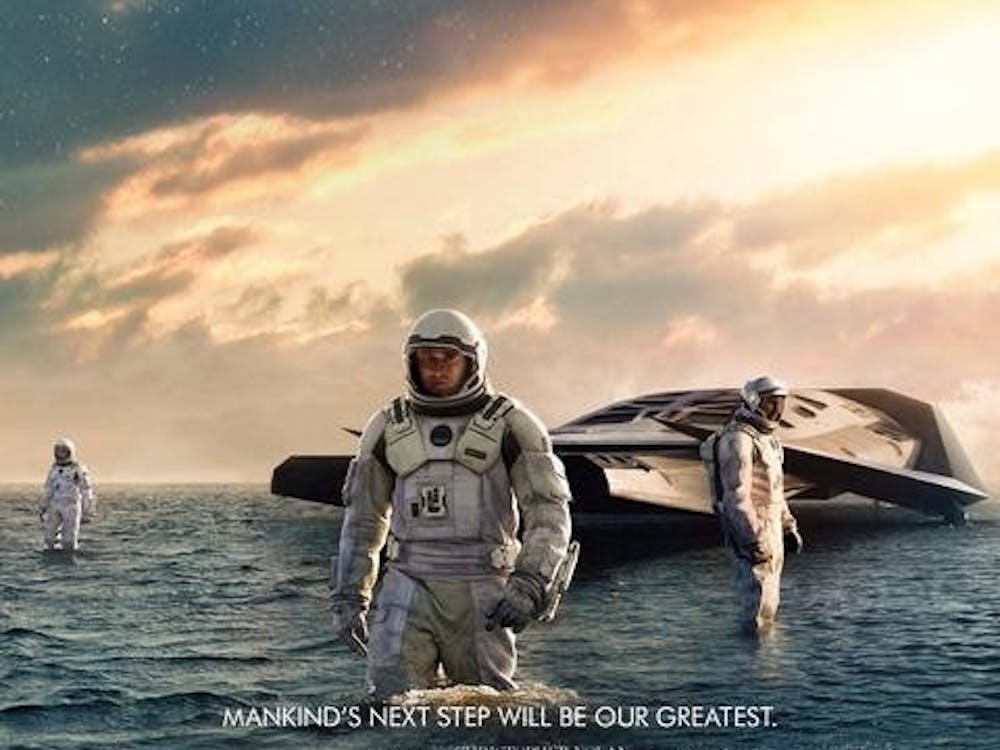Houston, we have a problem. That problem has a name: "Mission to Mars," which marks a disastrous attempt to explain the universe and our existence. Director Brian De Palma, who recently struck out with "Snake Eyes," constructs yet another movie that fails to take advantage of its potential during its execution.
Writers Lowell Cannon and Jim Thomas have set the first manned mission to Mars about 20 years in the future. In the first of a series of unrealistic touches, the characters hold a farewell barbecue where everyone gets introduced to the audience - strangely, no one seems a bit nervous.
Here, the viewers learn that Luc Graham (Don Cheadle), along with three other astronauts, has been picked for the mission over a much more experienced Jim McConnell (Gary Sinise).
|
When Graham's three companions succumb to a mysterious, catastrophic force, McConnell has the opportunity to prove his worth by taking part in a rescue mission for the remaining astronaut. He sets out on the mission with Woody Blake (Tim Robbins), Woody's wife, Terri (Connie Nielsen), and Phil Ohlmyer (Jerry O'Connell), all of whom are determined to find out what happened to the previous crew and whether there really is life on Mars.
The trailer made it pretty apparent that De Palma and company were going for a "2001: A Space Odyssey" feel, but what gets produced comes nowhere close to Kubrick's vision. Instead, the filmmakers rely too much on splicing together components of other sci-fi classics, such as the aforementioned "2001," as well as "Close Encounters of the Third Kind," "Contact" and "The Abyss." This amalgamation results in heavy-handedness as the mysteries of the origin of life are once and for all "explained" with a dose of "hooray for humanity" feeling thrown in for good measure.
Just like "Armageddon," "Mission" develops into a movie with countless far-fetched aspects throughout. For example, the spaceship that the rescue mission pilots lacks any alert mechanism to tell them that their fuel tank is breached, even though NASA routinely employs this technology.
De Palma even excludes vital scenes, including any media coverage and both landings on Mars. These were crucial scenes to show; the first landing was important because of its historic implications in the movie. The second scene, however, was necessary because it showed how the rescue crew survived a risky landing maneuver without a scratch.
The most disastrous aspects of the story line comprise the film's third act, when the crew meets up with an alien who looks like it could have been drawn better with an Etch-A-Sketch. However, the scientific plausibility of the origin of life theory that "Mission" proposes is entirely preposterous because the filmmaker's new idea completely ignores real scientific evidence.
The special effects, on the other hand, are generally a sight to behold and although they by no means compensate for the lackluster plot, the eye candy is a welcome sight.
Speaking of candy, product placement can be found prominently throughout the movie, slowing down its pace. For example, Ohlmyer constructs a replica of DNA with M&Ms in zero gravity conditions.
Even the great cast on this mission can't compensate for the film's cheesy dialogue, but they do succeed in eliciting compassion for their characters. This becomes especially apparent in an entirely irrelevant yet unbelievably manipulative scene in which the rescue mission crew attempts to save Woody from certain death.
"Mission to Mars" certainly tries to explain the origin of life; too bad it lacks any life itself.






